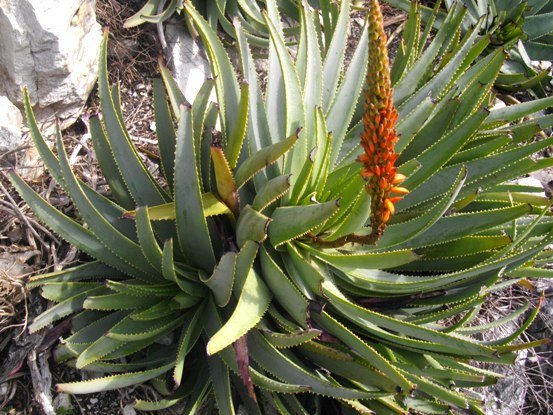Aloe succotrina, a misnomer

Author: Ivan Lätti
Photographer: Thabo Maphisa
This Western Cape fynbos aloe bears the name Aloe succotrina due to a naming error of long ago. The story goes that for many years Dutch ships passing the Cape and other stopovers to the East, took on board collected plant material from several sites, including Socotra and the Cape Colony. This was transported to Europe where considerable interest had been generated in foreign plants in the early seafaring days. On one occasion the sailors mixed up some samples on board ship, causing the bergaalwyn of the Cape to be named inappropriately, indicating Socotra as its place of origin.
Yemen may not be a popular tourist destination in our times. Pirates of the high seas are back to endanger those that come close. The difficulty of visiting Socotra could, however, also be seen as a botanical blessing: The remarkable preservation capacity of natural plant species of the island lies in its inaccessibility. Just compare the many over-trodden popular sites on the earth that have become depleted of their endemic vegetation! Socotra has a population of only 40 000 people and hardly any roads. A third of plant species on Socotra are endemic and still there. No wonder the island is sometimes called the Galapagos of the Indian Ocean.
Already in ancient times the island plants were renowned for their healing capacity. For instance, Alexander the Great is said to have sent a ship to Socotra for collecting plant material to treat his wounded and sick soldiers, before proceeding on his campaign to the east in about 332 BC (Frandsen, 2017; Smith, et al, 2017; Van Wyk and Gericke, 2007; Van Wyk and Smith, 2003; Reynolds, 1974; Jeppe, 1969; iNaturalist; Wikipedia; www.binscorner.com).

